News
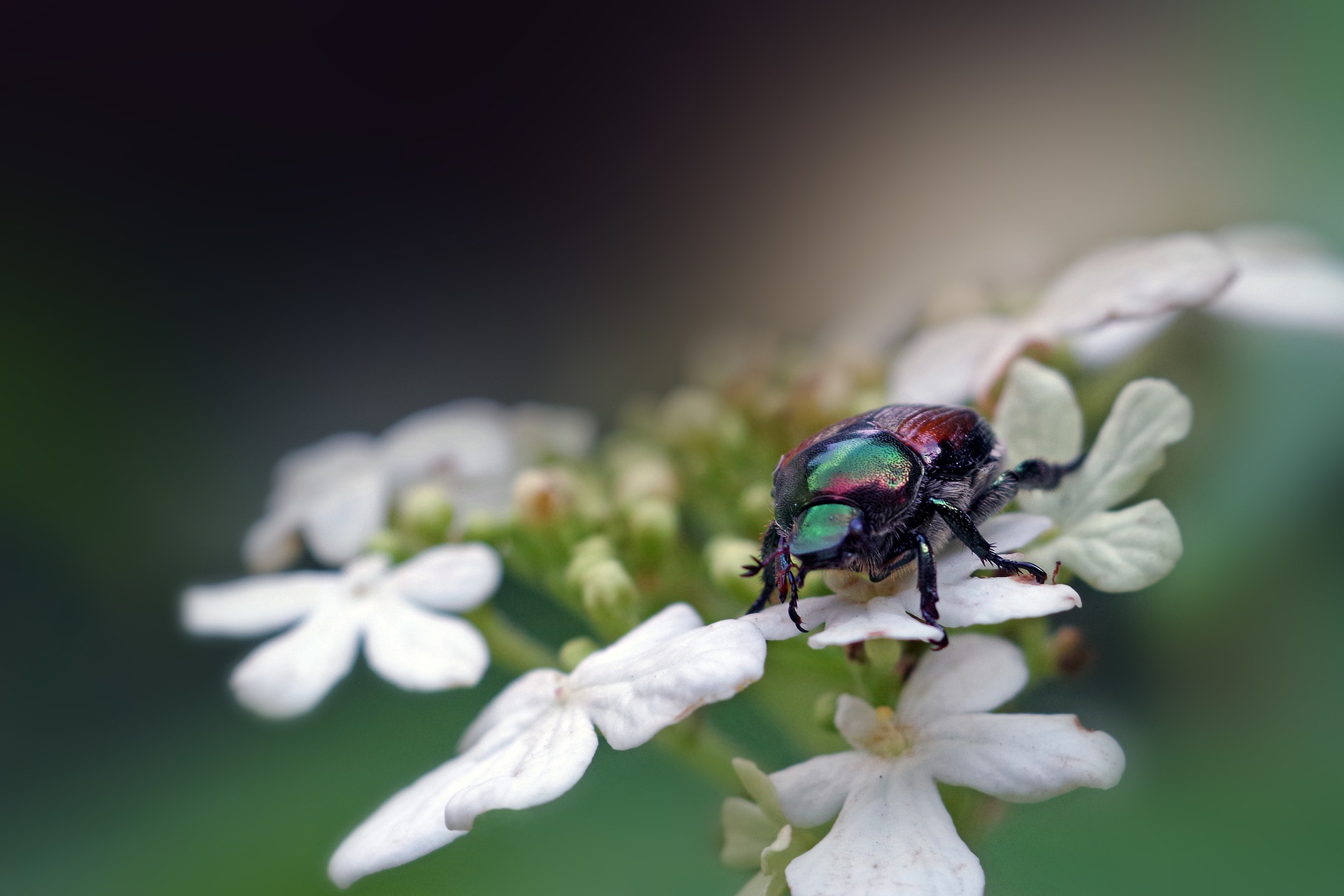
Invasive Species Series 2020: Japanese Beetle (Popillia japonica)
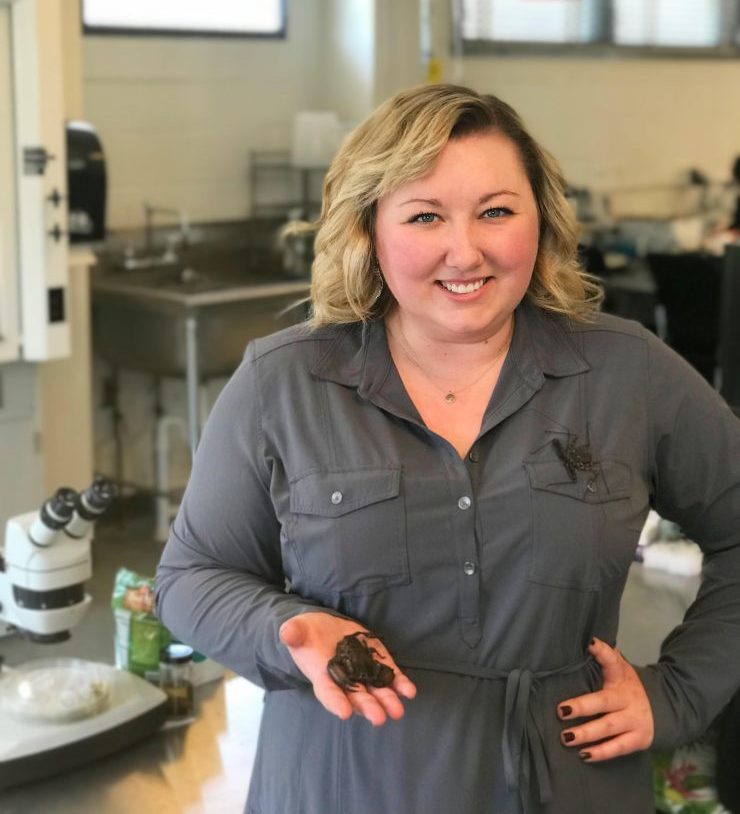
By Devan George, Communications Coordinator
Are you finding some new strange insects eating the plants in your lawn or garden? Some of the insect species nibbling on your prized plants can be especially difficult to control, because they are invasive. An invasive species is one that is not native to a specific location, and can be harmful in a new location. They can cause damage to humans, other insect, animals and even entire ecosystems! A common invasive insect found in lawns and gardens in Pike County is the Japanese Beetle. As you probably guessed, the Japanese Beetle is originally from Japan, where it is not a harmful species. In it’s native range the beetle has natural predators that keep the populations under control. It was first introduced to the United States in 1916, and with no predators and abundant food sources, the Japanese Beetle spread rapidly. The good news is with the right information and tools, you can control this pest in your own backyard!
Identification
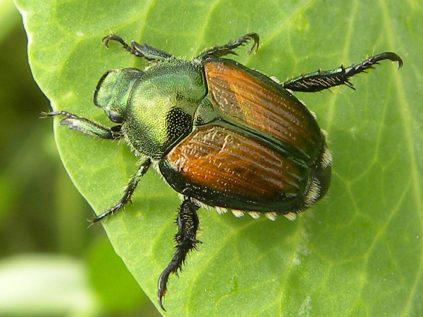
Adult Japanese beetle photo by: University of Maine Extension
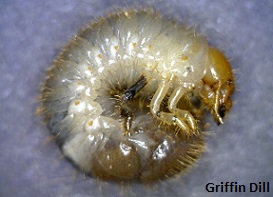
Japanese Beetle Larvae, found in soil
This beetle is one you may have already seen, not just in your yard, but in many outdoor spaces. They are easy to spot due to the adult’s eye-catching, metallic green colored bodies, and their bronze outer wings. They are also Identifiable by the white tufts along the sides and back of its body, under the edge of their wings (as you can see in the adult image to the right). The adults are approximately 3/8″ long, and very good fliers. Japanese beetle larvae are C-shaped white grubs (as seen in the picture above.) They live underground, eating grass roots, and can cause serious turf or grass damage.
There are over 300 different ornamental and agricultural plant species, including sunflower, hollyhock, and lilac that are food sources for the beetle. The adults feed on the leaves of plants, eating the greenery between leaf veins. This type of feeding results in the leaves of the attacked plant having many small holes in it, giving it a lace-like look (see photo below).
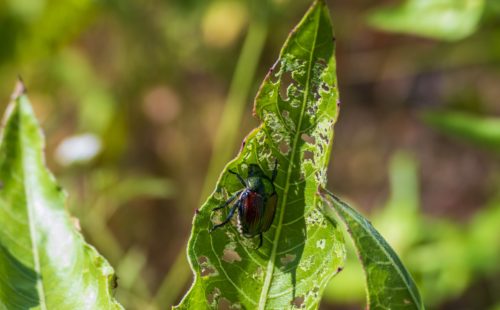
Japanese Beetle adult feeding damage, making the leaf look lace-like
Control
To prevent these pests becoming an issue on your property, you can start by choosing Japanese Beetle resistant plants. If you already have a plant that is susceptible, cover that plant with cheese cloth or other thin, breathable material from late June to early July, when the beetle adults are just emerging. But be sure to remove this covering before or as the plant is flowering so that pollinators can access it.
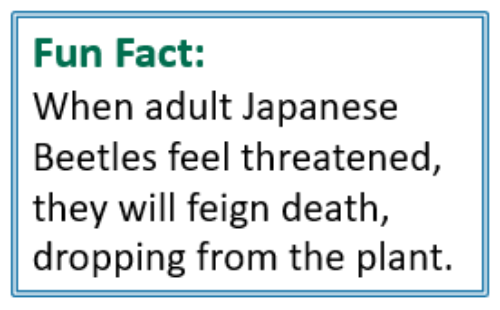
You can also manage the adults by hand, by picking or knocking the adults off of the plant into a bucket of soapy water. However, you want to watch the beetles you are throwing in the bucket, because if they have a white dot on their back, like the adult pictured right, you want to leave them be. This white dot is a Winsome Fly egg (istocheta aldrichi), a biological control agent that kills the beetle. You want to leave this beetle, so the fly’s population can grow, and provide more control.
Grubs can also be accessed by hand. If you are seeing damage to your grass (such as in the photo to the right), turn over several pieces of sod with a shovel. If you are finding more than ten grubs per square foot, you should consider applying a beneficial nematode, Heteroditis bacteriophora.
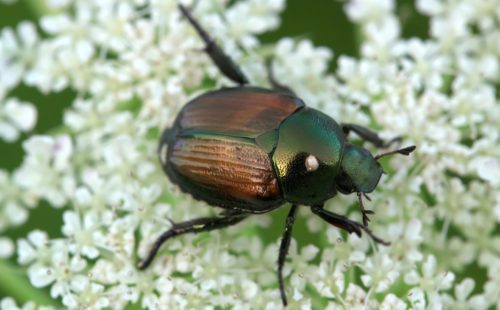
Japanese Beetle with a white Winsome Fly egg on it’s back.
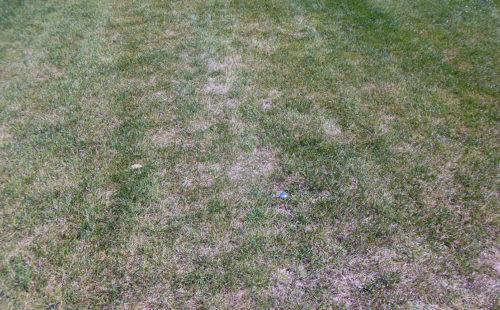
Early signs of Japanese Beetle Grub damage Photo by: University of Minnesota
If these physical and biological controls do not work for you, there are pesticides that treat Japanese Beetles, and you should contact a lawn care professional or tree care professional to explore these options. Before you consider a chemical approach, it is important to know that the majority of damage caused by Japanese Beetle is cosmetic and won’t kill the plant. However, insecticides may cause harm to beneficial insects, pollinators, and birds, so please use with care.
